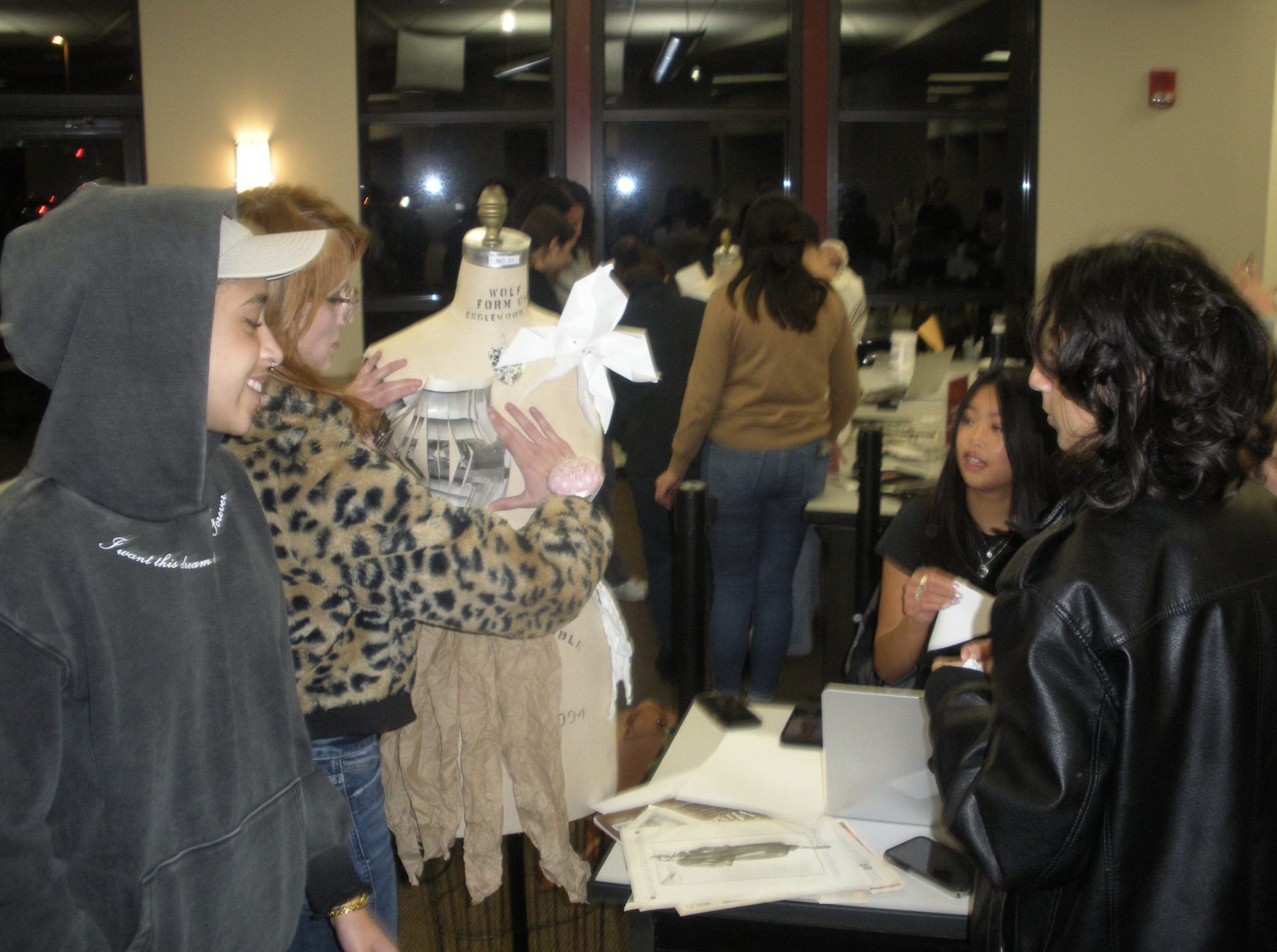Workshop with Fashion Designer Andrea Reynder
Written by Sophia Buckholtz

On Tuesday, November 7, fashion industry expert Andrea Reynders led a hands-on workshop for Vault members, instructing small groups to decorate mannequins with vintage Vogue magazines and paper. Reynders also shared insight from her journey through designing for Playboy magazine, traveling through Europe, living in South Africa and flip coats.
Reynders boasts a slew of titles; Professor Emeritus at the School of the Art Institute of Chicago, Lecturer at the Harper Community College, Founding Member of We Are Material, Director of Studio Alabaster Blue LLC and Executive Designer at Chicago Fashion Incubator.
Born to a Polish family in Chicago, Reynders shocked her family by not only being the first to attend college, but also choosing to attend fashion school. When Reynder asked her mother to pick up an application to the School of the Art Institute of Chicago, her mother obliged, but asked, “are you sure you want to go there?” in response to the long hair, beards, and crazy clothes she saw donned by its students. That was, in fact, where Reynders wanted to go. While she initially chose to double major in sculpture and fashion, her fashion design professor has an issue with the fewer fashion classes she then had time for. In the end, Reynders “chose fashion, and the rest was history.”
Despite being a fashion major, her final year of college was spent not in the fashion industry, but in environmental design, which taught her “the understanding of interdisciplinary work.” Reynders started selling her collection to the cheapest boutiques on Oak Street, Chicago. Specifically, she sold hand-painted pants made of suede and velvet. She kept herself busy, working for advertising agencies and making clothes for films, commercials, and Playboy magazine.
After graduation, Reynders traveled throughout Europe for about four months, and returned to do junior design at what she called “the equivalent of today’s Forever-21.” Reynders received a call from a past college professor who offered her the position to teach a class on Saturdays. Reynders fell in love with teaching, which inspired her to become a full-time tenured professor and, eventually, Chair of the Department at the Institute. Reynders says she, “never aspired to be a big name, I knew I was a maker.”
Reynders transitioned from teaching to serving as Director of the Chicago Fashion Incubator, where she mentored designers fresh out of college. These designers often stayed with the Incubator anywhere from 6 months to 2 years, studying a program designed to bring business connections to designers who hadn’t studied business in their undergraduate years.
After leaving the Incubator, Reynders found she wanted to focus on her own designs. Throughout her journey,, she emphasized the importance of remembering that “it’s great to have a target, and it’s great to reach that target, but I’ve known people that reach the target, and you then have to learn to evolve, or pivot.”
Later in her career, Reynders spent a year in the mid aughts teaching high school graduates in South Africa to sew. They started with throw pillows but that wasn’t what the students were interested in making. By learning how to craft clothes, they could start businesses in their villages and sell to their communities. However, this teaching experience proved to have some unique challenges. About half of the students were HIV positive and did not have the energy to continue with the work they were instructed to do. On some days, she would read to them, or they would sing and tell stories. While the school had several sewing machines, the 2-3 hours of electricity and minimal running water available forced them to adapt, learning how to sew French seams instead. French seams are double-sewn, encasing the raw edge within the seam. This creates a strong and neat seam without the assistance of machinery.
The designer’s time in South Africa left a lasting impression on her, which she later translated into art. Reynders took photographs of many of her students’ faces and created 70 cushions as an art exhibition, the proceeds of which the proceeds of which went to future students that would take the graduates' place of learning to sew. Reynders learned from this experience that “you can always learn how to work with less and still make a really beautiful project.”
One of Reynder’s favorite designs is called the flip coat, which, according to her website, “can be worn either short or long to help accommodate the changing weather, your daily endeavors, or simply your mood.” The coat can be worn long simply by flipping the coat upside down, as demonstrated for the Vault crowd. Reynders experimented with materials by making and selling the coat in tyvek, mohair, silk organza, and nylon taffeta. Reynders describes an ideal addition to anyone’s closet as “something that is timeless, something that you can keep and use in your wardrobe time after time, something that you can travel with (if you travel).”
Reynders left the Vault with her two guiding quotes of inspiration inspired by current media: Billie Eilish’s “What was I made for?” and the Mandalorian’s “Go get em’.”
Edited by: Lauren Veum, Roan Vaughan, Mia Quigley, Hana Razvi, Nicole Borras, Sam Teisch, and Sophie Wilmerding
DEI Reviewed by: Katherine Rubinstein





